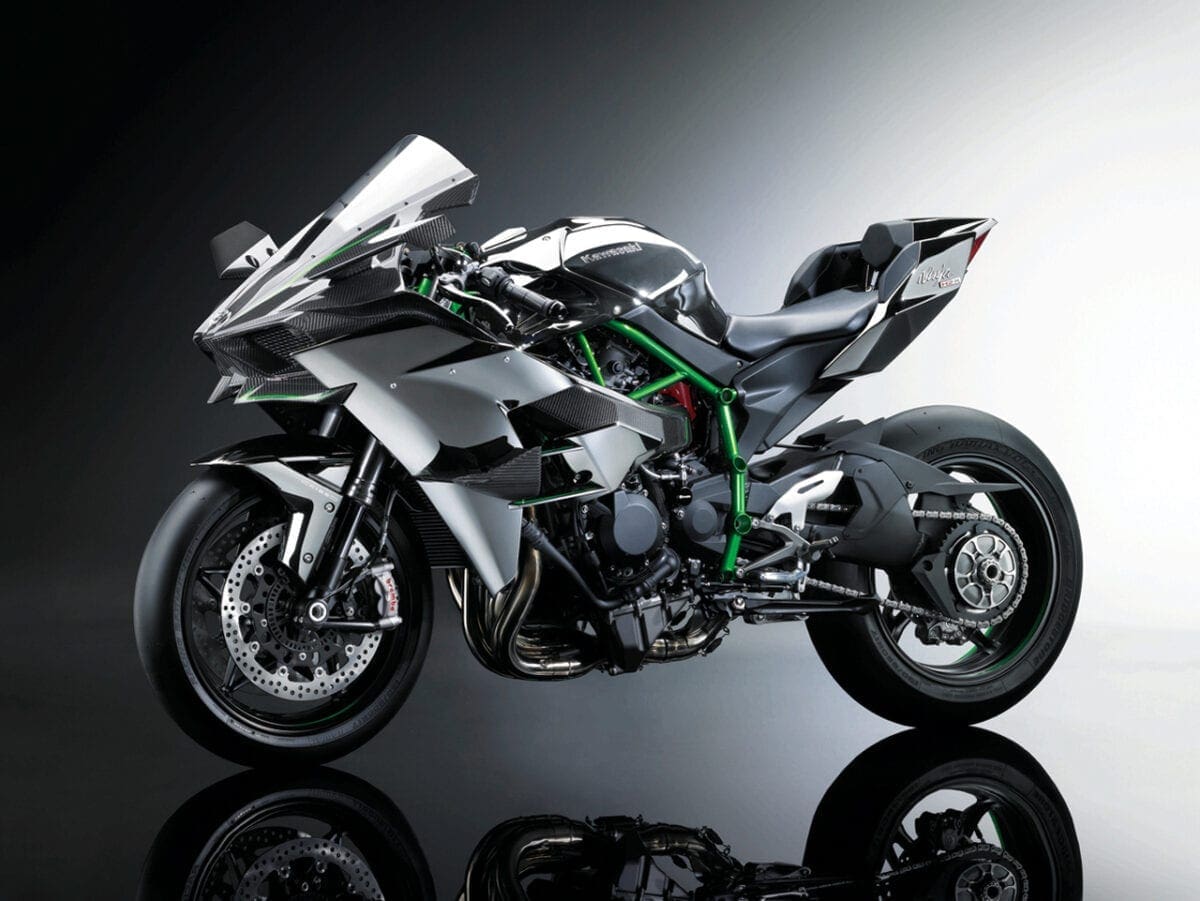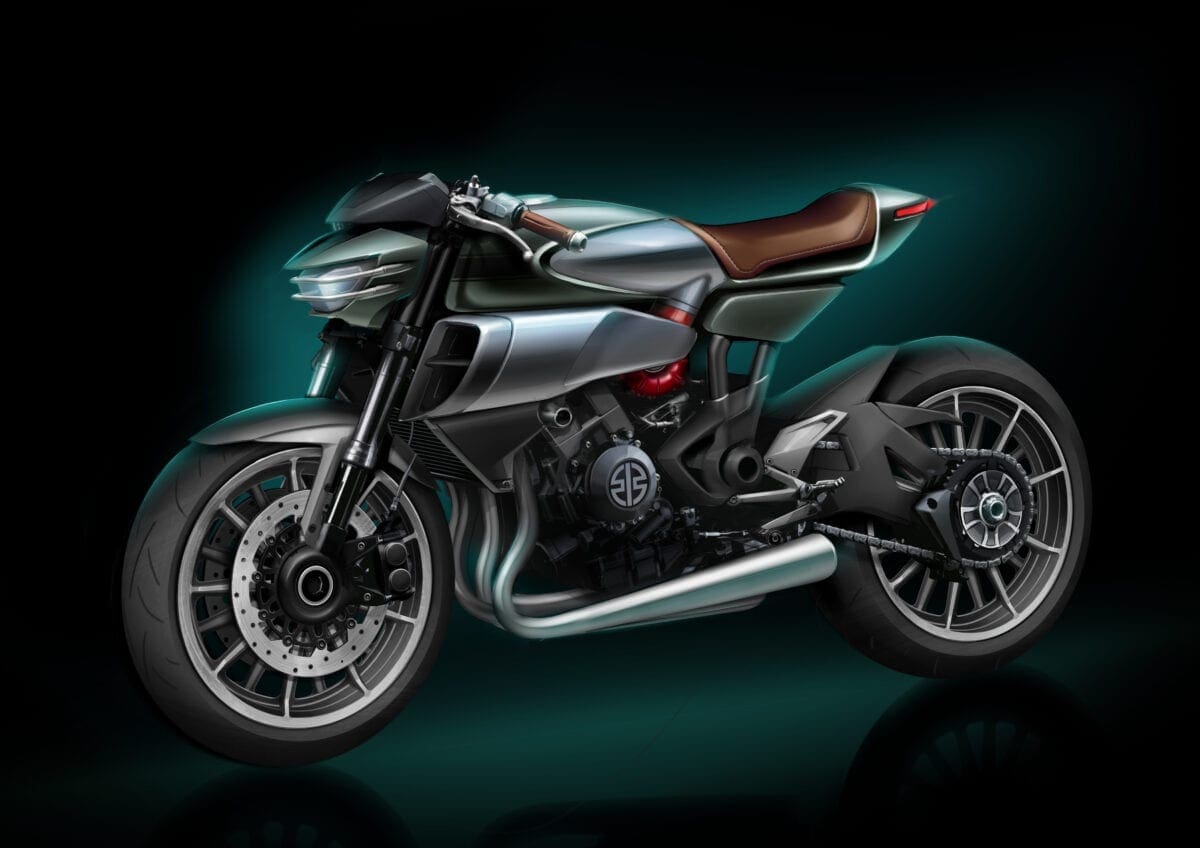These are the latest drawings from inside Kawasaki that give us the clearest indication yet of what the R2 road bike is going to be like.
We’ve seen a side-on drawing of the bike that will join the factory stable as a smaller sibling to the H2R before and while this side-on view looks no different to what we brought you ages ago, the mechanics of the supercharger itself are eye opening.
Enjoy everything More Bikes by reading the MoreBikes monthly newspaper. Click here to subscribe, or Read FREE Online.
We’ve been telling you that this bike is coming since last year, but this is the first time design for the specifics of the supercharger unit bolted on to the side of the R2 have shown us exactly what direction the factory is taking with the 2017 motorcycle.
It’s difficult to make out the exact mechanical details from the cross-section drawing, below, but this is the NEW supercharger design that is going to redefine what we expect from smaller capacity road bikes:
But what we do know is that the supercharger on the R2 will NOT run constantly to deliver compressed air into the motor. The design has the supercharger able to ‘push’ into the system when required. In the simplest of terms, this means that the supercharger unit on the R2 will be able to be called up when needed. Be that at a pre-determined rev-range, throttle opening or some other way that the rider can program into the bike’s electronic brain.
A criticism of the Kawasaki H2R (pictured below) is that the supercharger unit can feel clumsy unless you’re perfect with the throttle. The way the H2R’s delivery works is that there is a large amount of extra power fed into a small throttle opening. This new supercharger that can effectively load into the engine as needed is being developed to make things much easier to get on with. The rider will not need to be so precise with the throttle when coming out of a corner in order to get loads of useable drive.
That makes sense on the road, where the R2 is destined. Unlike the super-exclusive (and, let’s be honest, only for the talented) H2R, the R2 needs to be able to be ridden by a range of skill-sets. In the drawing’s description the Kawasaki blurb says that this unit gets a ‘pressing unit’ which applies a pressing force in the axial direction to the supercharger side helical gear. The design shows that the R2’s supercharger unit is not engaged into the motor all the time, even though it can be spinning whilst the engine is driving, which dramatically reduces the amount of noises from the unit – this is a major part of what Kawasaki is having to achieve with the R2 and where the majority of the development on the bike is going.
This unit is likely to be used across a whole range of Kawasaki’s though, from the roadster R2 to the modern cafe racer SC-02 (pictured below) and there’s even some rumours of a smaller-capacity Adventure-style bike getting the supercharged treatment, too.
It’s clear that Kawasaki want to make the R2 easier to ride than the H2R but there could be another reason for this type of supercharger – noise. The noise of the H2R’s supercharger constantly engaged is too loud to be bolted onto a bike that has to be below a certain decibel limit to meet Euro4 legislation. By not having the supercharger feeding into the motor all the time Kawasaki can side-step the noise issue as the unit would cut-in – and get loud – at higher revs which wouldn’t be used whilst the bike was being ridden at town speeds.
Think of it like a modern, supercharger version of an EXUP valve which Yamaha pioneered commercially in the 1980s. Only this noise-dodger also seriously ups the amount of driveable, useable power on tap.






